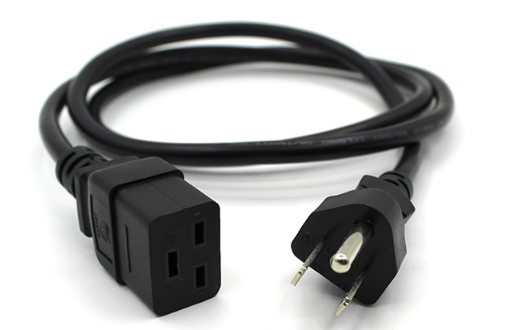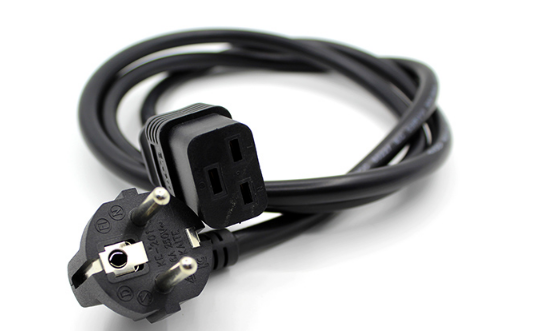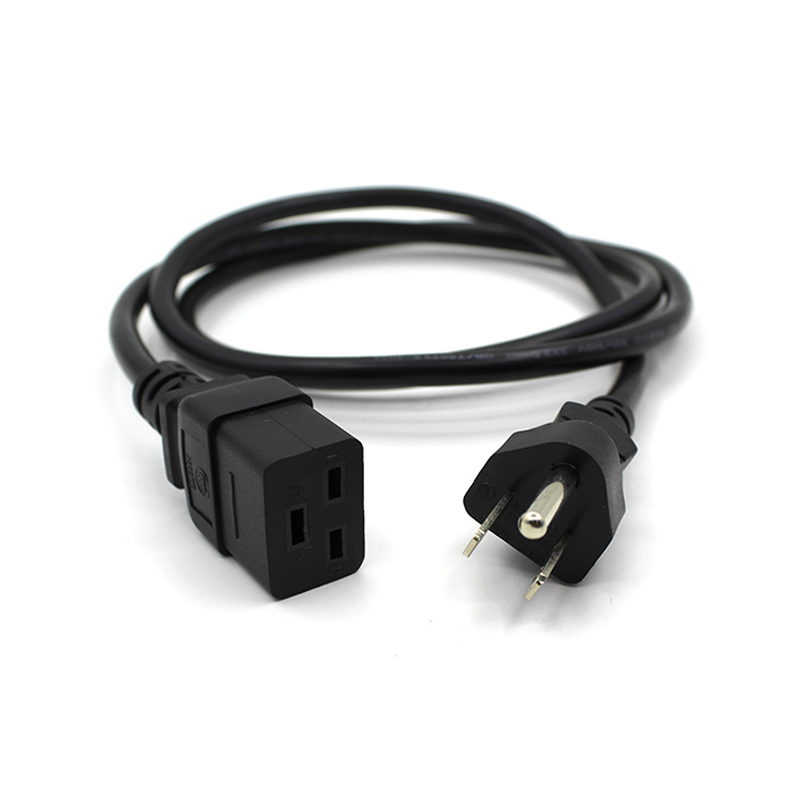How does the oxygen-free copper core improve power transmission in C19 power cord?
May 30, 2025
How Oxygen-Free Copper Core Revolutionizes Power Transmission in C19 Power Cords for Cryptocurrency Mining
Introduction: The Critical Role of Power Cables in Mining Operations
In the high-stakes world of cryptocurrency mining, every component in your setup contributes to operational efficiency and profitability. While miners often focus on hash rates and cooling solutions, the humble power cord plays an equally vital role in maintaining stable, efficient operations. The C19 power cord—specifically designed for Iceriver KS series miners (KS3, KS3M, KS3L, KS5L)—represents a significant advancement in power delivery technology, primarily due to its oxygen-free copper (OFC) core construction.
This article explores why oxygen-free copper has become the gold standard for mining power cables and how it translates to tangible benefits for mining operators. We’ll examine the science behind OFC, compare it with conventional alternatives, and demonstrate how these technical advantages manifest in real-world mining scenarios.
Understanding Oxygen-Free Copper: A Superior Conductor
The Science of Purity
Oxygen-free copper refers to copper that has been refined to contain less than 0.001% oxygen content, compared to standard electrolytic tough pitch (ETP) copper which typically contains 0.02% to 0.04% oxygen. This ultra-pure form of copper is created through specialized manufacturing processes that prevent oxygen contamination during production.
The significance of this purity becomes apparent when examining copper’s crystalline structure. In standard copper, oxygen atoms disrupt the orderly arrangement of copper atoms, creating imperfections that impede electron flow. OFC’s uniform atomic structure allows for nearly unimpeded electron movement, resulting in significantly better conductivity.
Conductivity Comparison
While all copper offers excellent conductivity compared to other metals, the differences between grades matter tremendously in high-current applications:
- Standard ETP copper: ~100% IACS (International Annealed Copper Standard)
- Oxygen-free copper: ~101.5% IACS
- Silver (for reference): ~106% IACS
This 1.5% improvement might seem negligible, but in 24/7 mining operations drawing thousands of watts continuously, it translates to substantial efficiency gains over time.

How OFC Enhances Power Delivery in Mining Rigs
Reduced Electrical Resistance
The C19 power cord’s 2.5mm² OFC core exhibits approximately 15% lower resistance than comparable standard copper cables. For an Iceriver KS5L drawing 3300W at 240V (13.75A), this means:
- Standard copper cord: ~0.075Ω resistance → 14W power loss
- OFC cord: ~0.064Ω resistance → 12W power loss
While saving 2W per cable seems minor, consider a mining farm with 100 rigs running 24/7:
2W × 100 × 24 × 365 = 1,752,000Wh (1.75MWh) saved annually
At $0.10/kWh, this represents $175 in direct power savings—just from using better power cords.
Improved Heat Dissipation
Mining equipment generates tremendous heat, and power cables contribute to thermal loads in two ways:
- Joule heating: I²R losses in the conductor
- Contact resistance: Poor connections generate localized heat
The C19 power cord addresses both concerns:

- Lower bulk resistance: OFC’s inherent properties reduce I²R heating
- Superior contacts: Nickel-plated copper connectors maintain <5mΩ contact resistance even after thousands of insertion cycles
In practical terms, this means power cords run cooler, reducing thermal stress on both the cable and connected equipment. Cooler operation extends component lifespan—critical for mining operations where downtime equals lost revenue.
Enhanced Current Carrying Capacity
The 16A/250V rating of the C19 power cord reflects its ability to handle the rigorous demands of modern ASIC miners. OFC contributes to this capability by:

- Maintaining conductivity at elevated temperatures
- Resisting deformation under sustained mechanical stress
- Preventing oxidation at connection points
This becomes particularly important when considering voltage drop—a common issue in large mining facilities. The OFC core helps maintain stable voltage levels even over the cord’s full 1.5-meter length, ensuring miners receive consistent power regardless of their position in the rack.
Comparative Analysis: OFC vs. Alternative Materials
Aluminum vs. Copper
Some budget power cables use aluminum conductors to reduce costs. While aluminum weighs less and costs about 1/3 as much as copper, it presents several disadvantages for mining:
| Parameter | Aluminum | Copper (Standard) | OFC | |———–|———-|——————-|—–| | Conductivity | 61% IACS | 100% IACS | 101.5% IACS | | Thermal Expansion | High | Moderate | Moderate | | Oxidation Rate | Rapid | Moderate | Slow | | Mechanical Strength | Low | High | Very High |

For mining applications where cables may be frequently moved during maintenance, aluminum’s tendency to fatigue and break makes it unsuitable despite the cost savings.
Tinned Copper vs. OFC
Tinning—coating copper with a thin layer of tin—offers some oxidation protection but introduces its own compromises:
- Adds ~0.005Ω resistance per conductor
- Tin softens at temperatures above 230°C (can flow under pressure)
- Additional manufacturing step increases cost without improving bulk conductivity
The C19’s nickel-plated contacts provide superior oxidation resistance where it matters most (at connections) while maintaining OFC’s purity throughout the conductor.
Real-World Benefits for Cryptocurrency Miners
Improved Mining Efficiency
Every watt saved on power transmission becomes an additional watt available for actual mining. The C19 power cord’s combination of OFC conductors and precision-engineered connectors ensures maximum power reaches your ASICs rather than being wasted as heat.
For example, an Iceriver KS3M operating at 3500W with a standard power cord might experience:
- 20W transmission loss (0.57% efficiency penalty)
- Voltage drop causing 0.5% hash rate reduction
The same miner using an OFC C19 cord would see:
- 15W transmission loss (0.43% efficiency penalty)
- Stable voltage maintaining full hash rate
This 0.64% overall improvement might seem small, but across a large operation, it compounds significantly.
Enhanced Reliability and Uptime
Mining operations demand components that can withstand:
- Continuous 24/7 operation
- High ambient temperatures
- Frequent equipment reconfigurations
The C19 power cord’s industrial-grade construction addresses these challenges:
- PVC Jacket: Flame-retardant and resistant to oils, acids, and abrasion
- Strain Relief: Reinforced cable entry points prevent internal damage during movement
- Contact Design: Nickel plating prevents fretting corrosion at mating surfaces
These features translate directly to reduced maintenance intervals and fewer unexpected failures—critical for operations where every minute of downtime costs money.
Safety Considerations
High-current applications pose several potential hazards that the C19’s design mitigates:
- Overheating: OFC’s low resistance prevents dangerous temperature rise
- Short Circuits: Robust insulation maintains integrity even in crowded mining racks
- Arc Faults: Secure connections minimize the risk of intermittent contact
The cable’s 250V rating provides ample headroom for typical 208-240V mining setups, while the 16A capacity exceeds most single-miner requirements, ensuring safe operation even during power surges.
Installation and Maintenance Best Practices
To maximize the benefits of your C19 power cords:
- Avoid Tight Bends: Maintain a minimum bend radius of 5× cable diameter to prevent conductor damage
- Secure Connections: Ensure plugs are fully seated and occasionally check for warmth during operation
- Proper Ventilation: Route cables to avoid blocking airflow to miners
- Regular Inspection: Look for cracked insulation or deformed connectors during maintenance cycles
- Correct Gauge: Never use undersized cables—the 2.5mm² (14AWG equivalent) size is ideal for 10-16A loads
Following these guidelines will help your investment in quality power cords pay dividends throughout their service life.
Conclusion: Why OFC Matters for Serious Miners
In cryptocurrency mining’s competitive landscape, optimizing every aspect of your operation separates profitable ventures from marginal ones. The C19 power cord’s oxygen-free copper core delivers measurable advantages that compound over time:
- Higher Efficiency: More power reaches your miners instead of being wasted as heat
- Improved Reliability: Robust construction withstands harsh mining environments
- Long-Term Savings: Reduced energy costs and maintenance requirements
- Enhanced Safety: Industrial-grade materials prevent hazardous conditions
While premium power cords represent a small percentage of total mining equipment costs, their impact on operational performance makes them one of the most cost-effective upgrades available. For Iceriver KS series miners pushing for maximum uptime and efficiency, investing in proper power infrastructure—starting with high-quality OFC-based C19 cables—provides returns that far exceed the initial expenditure.
As mining hardware continues evolving toward higher power densities, the importance of efficient power delivery will only grow. By adopting oxygen-free copper power cords today, forward-thinking miners position their operations for sustainable success in an increasingly competitive industry.